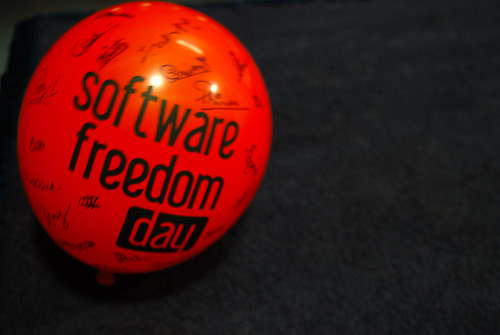

 What's GNU?What's GNU/Linux?What's Free Software Philosophy?What's GPL?
What's GNU?What's GNU/Linux?What's Free Software Philosophy?What's GPL?GNU: It stands for GNU's Not Unix so you can say its a recursive name. this name refers to being Unix-like but differs from Unix by being free software and containing no Unix Code .
Richard Stallman was the first one who started in GNU's development , he started working on it when he quit his job at the Massachusetts Institute of Technology's Artificial Intelligence laboratory.Stallman wanted computer users to be free, free to study the source code of the software they use, free to share the software with other people, free to modify the behaviour of the software, and free to publish their modified versions of the software.This philosophy was later published as the GNU Manifesto in March 1985.
Linux:
It's a generic term referring to Unix-like computer operating systems based on the Linux kernel which is originally written in 1991 by Linus Torvalds.
GNU/Linux: The Free Software Foundation views Linux distributions which use GNU software and they ask that such operating systems be referred to as GNU/Linux or a Linux-based GNU system. The media and common usage, however, refers to this family of operating systems simply as Linux, as do many large Linux distributions (e.g. Ubuntu and SuSE Linux). Some distributions use GNU/Linux (particularly notable is Debian GNU/Linux, on which Ubuntu is based), Linus Torvalds is against the GNU/Linux naming, stating that Linux is not a GNU project.
Free Software Philosophy: Free software is a matter of liberty, not price. To understand the concept, you should think of free as in "free speech", not as in "free beer".
There is a difference between Open Source and Free Software as Open Source is a development methodology; Free Software is a social movement.
GNU/Linux Histrorical Timeline:1969: Unix is developed
1983: The GNU Project launched by RMS
1991: Linux 0.01 ( 10k line of code, 1 user )
1994: Linux 1.0 ( 170k line of code, 100 thousand user)
1996: Linux 2.0 ( 400k line of code, 1.5 million user)
1998: Open Source Definition (4 Freedoms)
1998: Linux 2.1.11 ( 1.5M line of code, 7.5 million user)
1999: Linux 2.2: 12 million users
GNU/Linux users in Egypt
GPL: Nobody should be restricted by the software they use. There are four freedoms that every user should have:
- the freedom to use the software for any purpose.
- the freedom to change the software to suit your needs.
- the freedom to share the software with your friends and neighbors.
- the freedom to share the changes you make.
When a program offers users all of these freedoms, we call it free software.
if you distribute copies of such a program, whether gratis or for a fee, you must:
- pass on to the recipients the same freedoms that you received.
- make sure that they, too, receive or can get the source code.
- show them these terms so they know their rights.
- there is no warranty for the GPL'd free software, and modified versions has to be marked as changed, so that their problems will not be attributed erroneously to authors ofprevious versions.
Open Source is Not a closed term for software only but it contain many other fields like :
- Web Designing: OSWD.org (Open Source Web Design), OpenDesigns.org , OpenWebDesign.org
- Learning: ChemCollective.org, k12EdCom.org
- Hardware: opencores.org
- General Knowledge: Wikipedia.org
References :
www.wikipedia.comsome other links
presentaion made by eng/Ahmed El-Mekkawy























